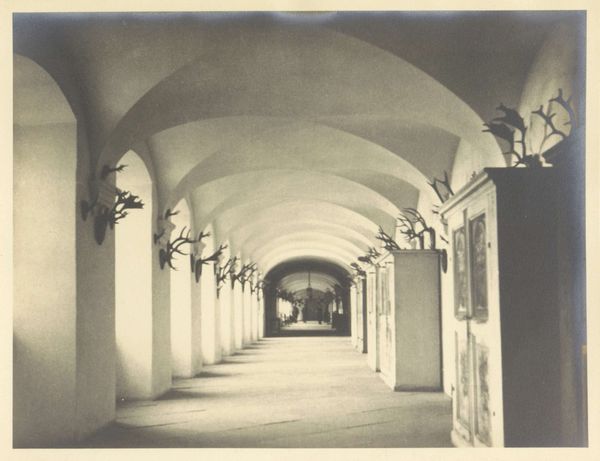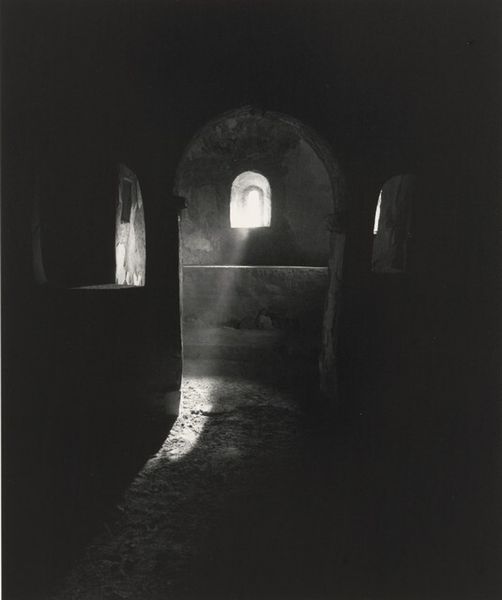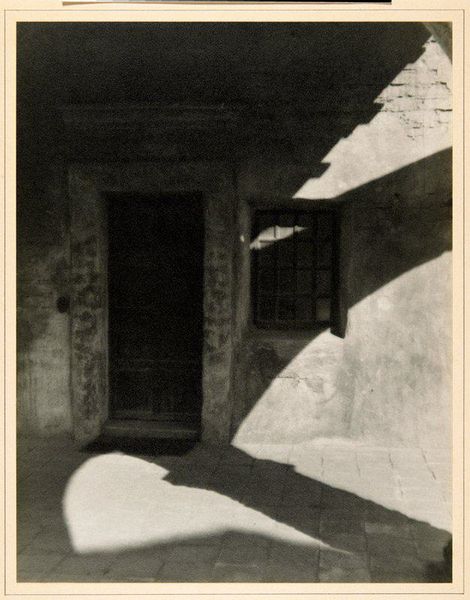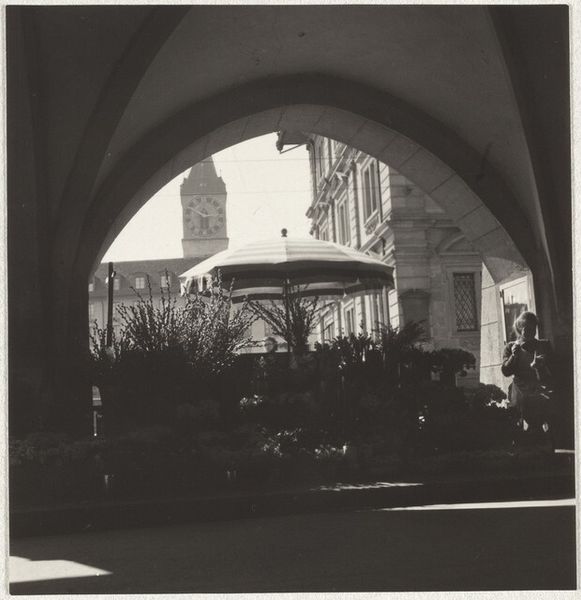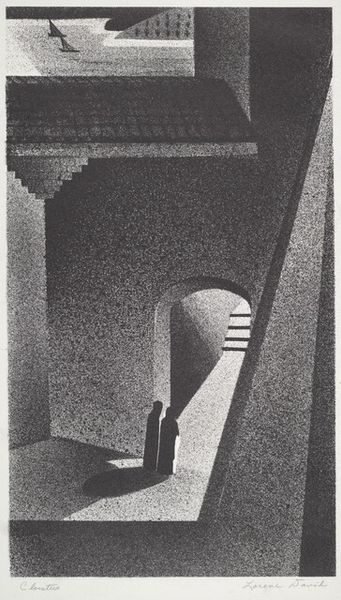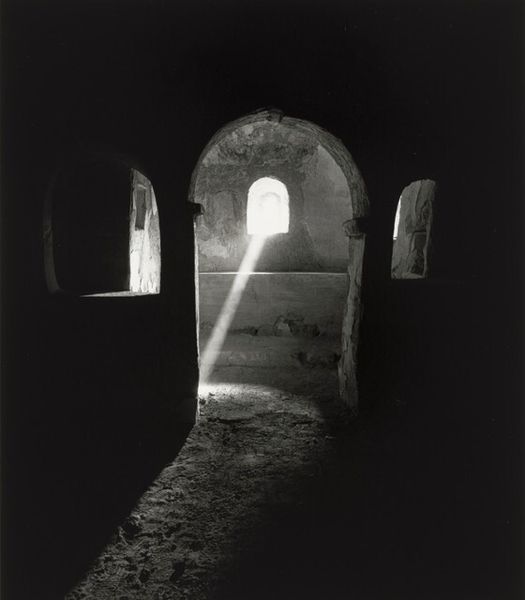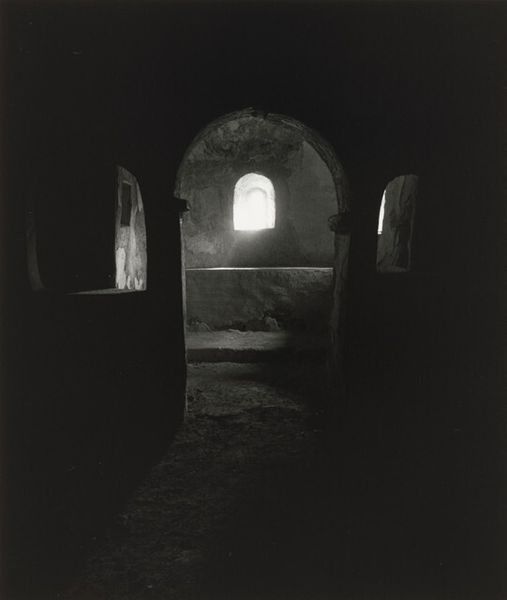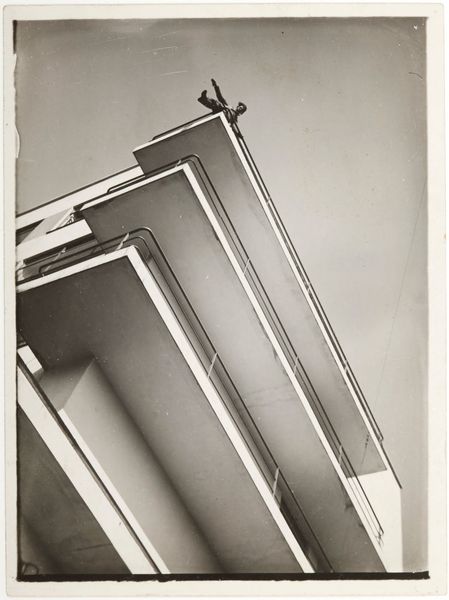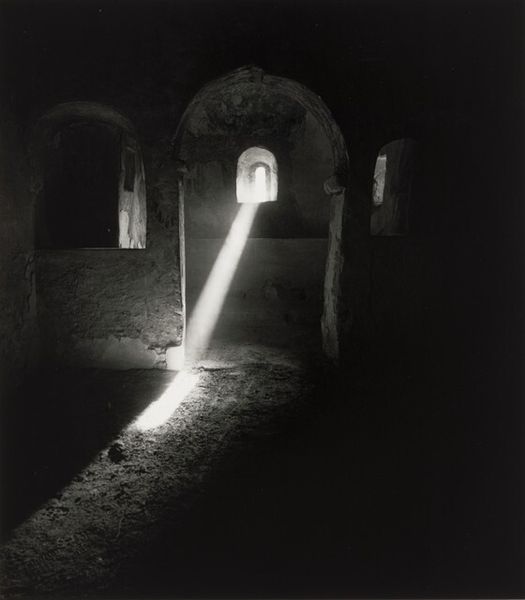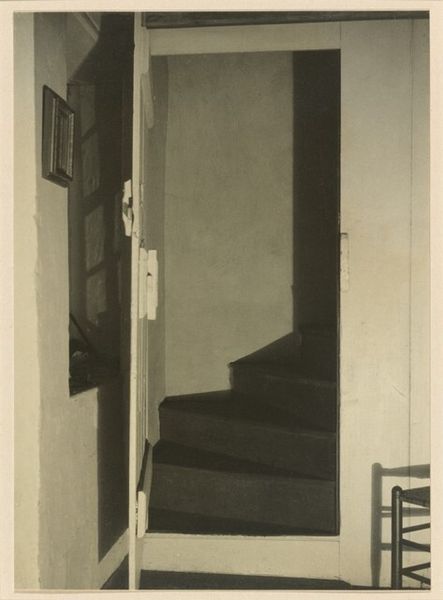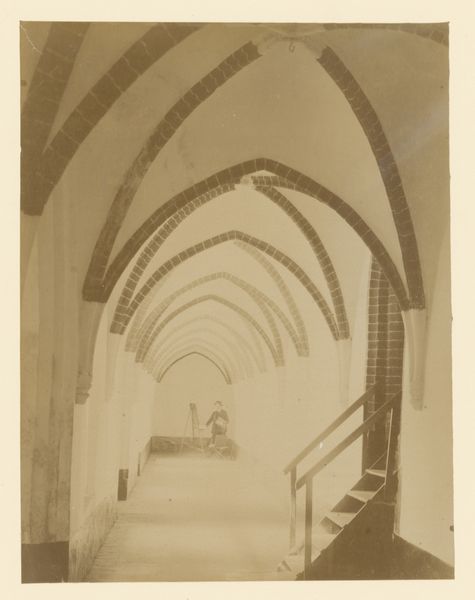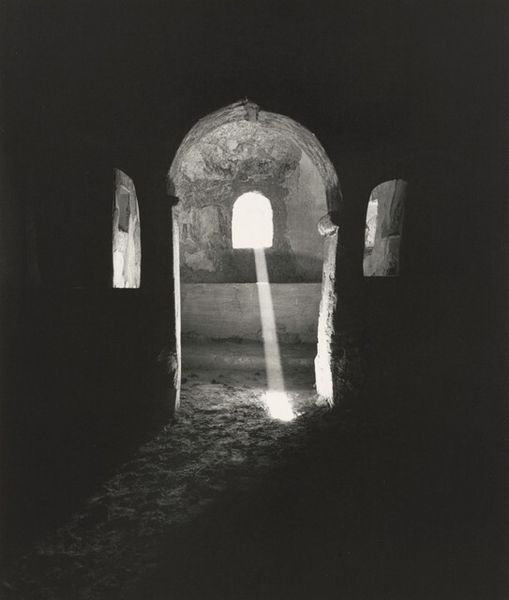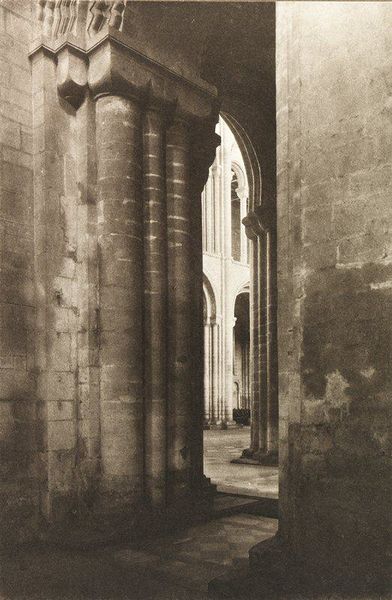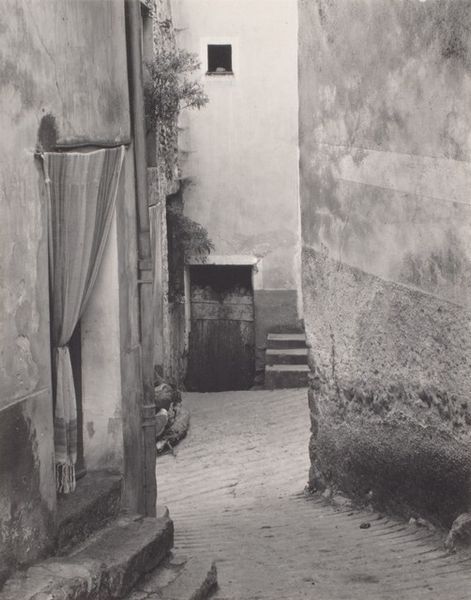
De hal van huize Inter Quercus in Aerdenhout, in aanbouw c. 1902 - 1910
0:00
0:00
Dimensions: height 400 mm, width 275 mm, height 505 mm, width 404 mm
Copyright: Rijks Museum: Open Domain
Curator: This photograph, taken by George Hendrik Breitner around 1902 to 1910, captures the interior hall of the Inter Quercus house in Aerdenhout while it was under construction. The image is currently held in the Rijksmuseum. Editor: It's quite stark, isn't it? That unfinished staircase ascending into the gloom, the single marble column... feels rather haunting. Almost as though the structure itself is exhaling history. Curator: The composition definitely draws the eye upwards. What I find compelling is the starkness Breitner chose to represent the building process, revealing the architecture rather than concealing it. We are seeing this through the lens of someone very engaged with public life in Amsterdam. This intimate look behind the scenes is a marked divergence. Editor: Agreed. I’m interested in what it tells us about labor of the unseen artisan, even in the upper classes: the scattered wood shavings and raw materials imply a kind of physical engagement. What about the class dynamics that would require craftsmanship and hired help? How did his impressionistic lens capture class division and architectural process? Curator: Good point. In this period photography was still establishing its artistic merit, often imitating painting, so a topic like a house's construction gave way for the photographic project and public validation as art. Editor: Absolutely. The house became the canvas. Note the raw texture of plaster and wood versus the calculated precision of each carefully placed tile visible through the arches to the left of the staircase; one speaks of handcrafted imperfections, and the other to decoration and ornamentation to give an example. Breitner showcases the divergence. Curator: He's almost daring us to question the facade of perfection later masking this labor. Consider, too, who this house was intended for: Inter Quercus, meaning “Among the Oaks,” was being constructed for a family of considerable wealth, speaking to their taste but also how societal forces dictate what "good" architecture could even look like. Editor: Right, Breitner has certainly provided us an enduring framework to analyze class, materialism, and the socio-economic elements of early 20th century domestic architecture. Curator: It does prompt so much consideration about photography’s role at the turn of the century. Editor: Yes, an image speaking of social structures during Amsterdam's history captured through the lens and its own process and making.
Comments
No comments
Be the first to comment and join the conversation on the ultimate creative platform.
